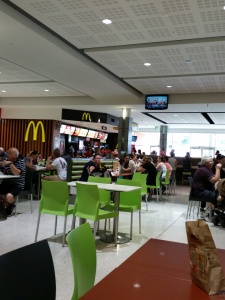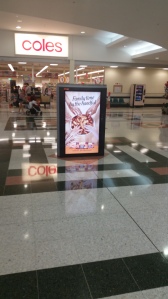The definition and role of the public and private space has been blurred significantly since the recession of traditional types of public spaces. Traditional public spaces have been defined by Neal and other urban planners as:
all areas that are open and accessible to all members of the public in a society
These places for example include parks, public squares and beaches. Central to these ideas urban planners are concerned with how these spaces and other public spaces function from a social, economic and political perspective. In particular they are concerned with how citizens interact and use these spaces. Traditionally this has been separate from our private spaces. Private places are where we go to seek refuge from the public spaces. Madanipour defines these spaces as ‘territories’, which include our homes and properties.
However with the availability and spread of web 2.0 technologies the difference between the two is often hard to define. Badger laments this change as it has affected the social norms that we are supposed to abide by. Yet, it seems that this view on societal norms lacks a connection to what is actually happening in our public space now.
The reality is that increased technologies have made the opportunity for “Pseudo – Public” spaces. These spaces while public in nature are owned by private corporations who use the traditional values of a public space for economic gain. Most notable of pseudo – public spaces are malls or shopping centres. This is due to their social function to house people in a public way, yet have the ability to leave out certain groups unlike traditional public spaces. Pseudo – public places are also characteristically a hot bed for aggressive marketing tactics, including television and digital advertising screenings.
These two screens, which I shot on a recent trip to the shopping complex that is closest to my house, show exactly the type of blurring of the public and private. Each are used to either promote a brand or product or are used to show a particular television station (the same station runs at all times).
In fact this is an increasingly used advertising tactic called ‘Mall Media’. Mall media is the combination of advertising through both smaller scale electronic billboards and through dedicated network channels that show companies products (this is prominent in America, less so in Australia) to their target markets.
Mall media companies look to exploit the segment of the pseudo – public space market that are most readily available to them, affluent parents and young teenagers. RMG networks has even given them their own specific sub categories, the alpha mum and the influential teen. The distinct consumer behaviour that they describe for both cohorts is certainly plausible – notably the social media awareness that they attribute to the teenage population.
This is where the blurring of the public and the private realm becomes problematic for people. Of greatest concern is should we be allowing these big business companies the ability to directly market to the most susceptible segment of the population and what effect does it have on them. Personally, I think these screen provide relief from the monotony that is often associated with going shopping and especially in the food court. I couldn’t count the amount of times I’d watched Ellen, through subtitles, on that very television.
What I’m not sure of however is how these types of billboards and televisions enhance the social experience of traditional public places, like a park for instance. Surely the linkage to the types of activities that we are undertaking in the pseudo public versus the real public is what should define the amount of content and what is being advertised to us. Without these boundaries I think this blurred culture could become of concern.



Pingback: Regulators! Mount Up! | About A Blog